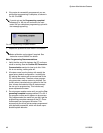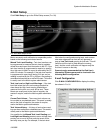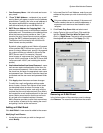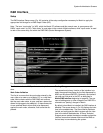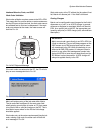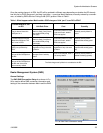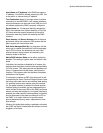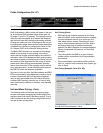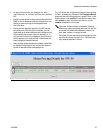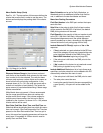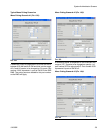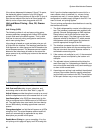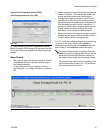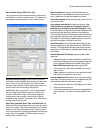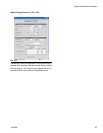
System Administrator Screens
56 312353B
Part number refers to the R&R part number of a single
unit of this fluid “part” (i.e. 1 quart of 5W30 oil). If the
Sale Price field is left blank, the pricing structure for this
part number on the DMS applies. If a Sale Price is spec-
ified, it will override the pricing structure on the DMS.
The Part Number field is required and cannot be left
blank. See Table 1, page 53.
Accounting units refers to the billing units of measure
used for the fluid, which does not need to match the
units programmed for the meter. The standard Matrix
units are part of this list, including pints, quarts, gallons,
or liters.
Custom unit multiplier is a number used to convert the
dispensed fluid volume from “standard” Matrix volumet-
ric units to some other unit of measure. That is, the R&R
part number assigned to this fluid isn’t in units of pints,
quarts, gallons, or liters.
For example, if a dealer has a part number for an oil that
represents a tenth of a quart; in this case, the account-
ing units would be quarts and the custom unit multiplier
would be 10. If 5 quarts of this oil were dispensed, the
Matrix R&R Interface would post a quantity of 50 units of
this part number to the R&R RO.
A dealership may want to use a part number that repre-
sents multiple units of fluid, where quantity 1 of a part
number is, for example, 6 quarts. In that case, the cus-
tom unit multiplier would be specified as one-sixth, or
0.167. With this as the unit multiplier, a dispense of any-
thing less than 6.0 quarts would result in Matrix posting
a quantity of 1 to the RO. Anything dispensed between
6.0 and 12.0 quarts would have a quantity of 2 posted,
and so on.
Adjusted volume provides the option to always round
up or always round down the oil dispense amount.
Enable Menu Pricing is a yes or no setting. If no, the
unit pricing on this page will apply to all ROs using this
fluid. If yes, the interface searches the menu list for a
menu whose criteria is satisfied (i.e., volume, timing
constraints are met). If a menu applies, that menu’s
configuration is used to apply charges to that RO. If no
menu is found, unit pricing applies.
The unit pricing configuration described here is used by
the interface as follows:
1. The fluid is dispensed by a meter in the Matrix sys-
tem. The interface is assumed to be enabled, both
globally (General Settings page on R&R Interface
Setup screen) and for this particular meter (the
meter’s setup page). The meter reports the exact
dispense amount to the Matrix PC, which records
the dispense activity and triggers the interface to
post the appropriate charge to the RO.
2. The interface compares the units of measure pro-
grammed into the meter with the accounting units. If
they do not match, the actual dispense volume is
converted to accounting units.
3. If the custom unit multiplier is not 1.0, the converted
dispense volume is multiplied by the custom unit
multiplier.
4. The adjusted volume is determined by taking the
result from step 2 or 3 (depending on whether a cus-
tom unit multiplier was used or not) and rounding up
or down to the next whole number.
5. Assuming menu pricing is not enabled, the adjusted
volume is the number used for quantity when post-
ing this fluid’s part number to the RO. The sale price
for this part number may or may not be specified.
Typical Unit Pricing Scenario in Parts (F
IG. 99):
For every dispense of this fluid, regardless of quantity,
Matrix will round up to the next whole number and apply
that quantity of part number 1234 to the RO. Part 1234
is a quantity of 1 quart of 5W-30 oil on the R&R DMS.
The pricing structure as loaded on the DMS for this part
number applies.
Menu Pricing (Parts)
• Menu pricing allows the dealer to charge a flat rate
for dispenses that fall in specified volume ranges
and timing constraints.
The Part Number, Accounting Units, and Custom
Unit Multiplier fields must be coordinated for the
proper fluid charge to be posted on the RO.
F
IG. 99



